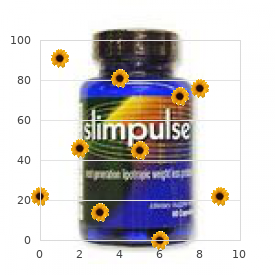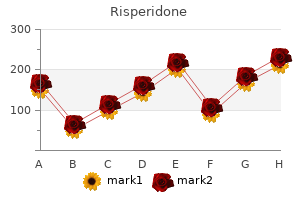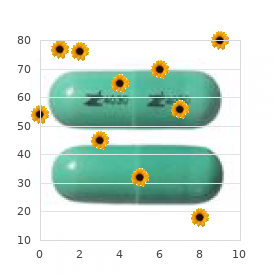Risperidone
"Discount 2mg risperidone with amex, medicine synonym".
By: H. Akascha, M.A., M.D.
Deputy Director, Wayne State University School of Medicine
As sperm passes through the reproductive tract moroccanoil treatment buy risperidone without a prescription, it is mixed with seminal fluid medications you can take when pregnant risperidone 2mg otc, which is produced through a joint effort by the seminal vesicles medications related to the blood purchase risperidone 4mg line, prostate gland symptoms vaginal cancer purchase risperidone paypal, and bulbourethral gland. The seminal vesicles contribute fructose to nourish sperm, and the prostate gland gives the fluid mildly alkaline properties so it will be able to survive the relative acidity of the female reproductive tract. The diploid stem cells in males are known as spermatogonia (sing: spermatogonium). In the process of differentiation, they replicate their genetic material and develop into diploid primary spermatocytes. Because the prostate surrounds the urethra, classic symptoms of the condition are urinary frequency and urgency. It consists of a head (containing the genetic material), a midpiece (to generate energy from fructose for motility), and a tail (for motility) (see Figure 4. This structure is derived from the Golgi apparatus and is necessary to penetrate the ovum. Once a male reaches sexual maturity (puberty), approximately 3 million sperm are produced per day. The gonads, known as ovaries, produce estrogen and progesterone (much more on this when we discuss the endocrine system in chapter 12). The ovaries are located below the digestive system in the pelvic cavity; each consists of thousands of follicles, which are multilayered sacs that contain, nourish, and protect immature ova. Between puberty and menopause, one egg per month will be released into the peritoneal sac, which lines the abdominal cavity. It then moves into the fallopian tube, or oviduct, which is lined with cilia to usher it along. The fallopian tubes are connected to the muscular uterus, which is the site of fetal development. The lower end of the uterus known as the cervix connects to the vaginal canal, where sperm is deposited during intercourse. As we mentioned earlier, unlike males, females have separate excretory and reproductive tracts. Although gametocytes undergo the same meiotic process in both females and males, there are some test-worthy differences to keep track of. First, there is no unending supply of stem cells analogous to spermatogonia in females. These cells are 2n (like primary spermatocytes) and are actually frozen in prophase I. Once a woman reaches menarche, one primary oocyte per month will complete meiosis I, producing a secondary oocyte and a polar body. The division is characterized by unequal cytokinesis, which doles ample cytoplasm to one daughter (the secondary oocyte) and nearly none to the other (polar body). Key Concept Remember that spermatogenesis in males is a 1:4 division, whereas in females, oogenesis is 1:1. The secondary oocyte undergoes the second division to split into a mature ovum and another polar body, which will eventually die. With respect to the scheme of meiosis we learned earlier, are four haploid daughter cells formed through oogenesis Although the ovum is the only functional gamete, all four would carry the haploid genetic material prescribed by theoretical meiosis. But, simply put, because its daughters would not be functional anyway, there is no productive reason for the first polar body to divide again. A mature ovum is a very large cell consisting of large amounts of cytoplasm and organelles. They will shoot sky-high because they have no estrogen and progesterone feedback (both of which are secreted by the ovaries). Sperm will usually survive for one to two days after ejaculation if the environment (uterine, in this case) is suitable. The fusion of these haploid cells, usually in the widest part of the fallopian tube, results in restoration of the diploid chromosome number and a cell known as a zygote.



Closure is delayed in premature infants medications 222 buy risperidone us, perhaps as a result of impaired vasoconstrictor response to increased oxygen tension medicine zocor order genuine risperidone online. Failure of the ductus to close allows shunting of blood from the systemic circulation to the pulmonary circulation treatment episode data set buy generic risperidone line, with resultant myocardial stress symptoms breast cancer 2mg risperidone with mastercard, pulmonary vascular congestion, and respiratory difficulty. Large defects may cause mild growth failure and exercise intolerance not appreciated except in retrospect after defect closure. A lower left sternal border diastolic murmur produced by increased flow across the tricuspid valve may be present. This acyanotic lesion requires correction in infancy to prevent cardiac failure and associated complications. A systolic murmur of large pulmonary flow is present, and a lower left sternal border diastolic murmur is heard. Left untreated, these children develop cardiac failure, growth failure, and recurrent pulmonary infections in infancy. Her mother reports that lately the baby has been sweaty and sometimes blue around the mouth when she nurses, and she seems to be eating less than previously. He does well until day 5 of life, when he develops an increased respiratory rate, mild subcostal retractions, and a widened pulse pressure, but no cyanosis or increased oxygen requirement. Furosemide A 12-month-old boy with a stable but moderate-size ventricular septal defect presents to the pediatric dentist for cleaning and management of his multiple caries. None of the above A previously healthy term infant suddenly develops respiratory distress on the day 3 of life. Which of the following is the most appropriate treatment for immediate stabilization of this infant A noncyanotic heart lesion is suspected in this child who has a new heart murmur without a corresponding increase in oxygen requirements. The murmur, not heard at birth, becomes evident after the pulmonary vascular resistance falls. The guidelines for the use of prophylactic antibiotics are updated frequently by the American Heart Association. Among those currently recommended to receive antibiotic prophylactic treatment are patients for whom any heart infection would result in the highest incidence of adverse outcome: previous history of endocarditis, prosthetic valve or material for repair, heart transplant patients, and severe or partially repaired cyanotic congenital heart defects. The most common congenital acyanotic heart lesion is the ventricular septal defect. Patent ductus arteriosus, atrial septal defect, and arteriovenous canal are other left-to-right shunt lesions. Left-to-right shunts eventually can reverse direction (right-to-left) and cause cyanosis if pulmonary hypertension develops (Eisenmenger syndrome). This page intentionally left blank Case 25 A term 3700-g infant was delivered vaginally without complications. Best initial management: Administer prostaglandin E1 to maintain patency of the ductus arteriosus. This situation is incompatible with life unless a connection between the pulmonary and systemic circuits exists. During the first hours of life, the ductus arteriosus and the foramen ovale provide this connection; symptoms develop when this connection begins to close. Management of the infant in this scenario consists of immediate steps to maintain patency of the ductus arteriosus. Schematic drawing of circulation of various cardiac defects: (A) Normal circulation; (B) tetralogy of Fallot; (C) pulmonary artresia; (D) tricuspid atresia; (E) transposition of the great arteries; (F) truncus arteriosus. Black arrows indicate deoxygenated blood; cross-hatched arrows indicate mixed blood; white arrows indicate oxygenated blood. Patency of the ductus maintains a connection between the pulmonary and systemic circulations; closure normally occurs on the first or second day of life in term infants. Unsaturated blood returning to the heart from the periphery is shunted into the systemic circulation, thus bypassing the lungs. Transposition of the great arteries occurs in approximately 5% of children with congenital heart disease.

When the body is very well hydrated symptoms leukemia buy generic risperidone on line, the collecting duct will be fairly impermeable to salt and water treatment vaginitis cheap risperidone 3 mg on line. When in conservation mode (imagine walking on a hot day with no water bottle) medicine cabinets with mirrors 2 mg risperidone fast delivery, antidiuretic hormone and aldosterone will each act to increase the permeability of the collecting duct symptoms throat cancer order risperidone 2 mg otc, allowing for greater water reabsorption and more concentrated urine output. Osmolarity Gradient the kidney is capable of altering the osmolarity of the interstitium (the tissue surrounding the tubule). This creates a gradient that, coupled with the selective permeability mentioned above, will allow us to reabsorb and excrete compounds as needed. In the normal physiological state, the osmolarity in the cortex is approximately the same as that in the blood and remains at that level. As we descend deeper into the medulla, the osmolarity in the interstitium can range from isotonic with blood (when trying to excrete water) to four times as concentrated (when trying to conserve water). Water will move out of the tubule, into the interstitium, and eventually back into the blood if the concentration of solute is very high in the surrounding tissue, thereby conserving the water. If the concentration is the same in the tubule and in the interstitium, there is no driving force (gradient), and the water will be lost in urine. Both active and passive transport are used, and the extent of each depends on the specific section of the nephron in question. The takeaway is that membrane permeability is absolutely necessary for the kidneys to work. In the proximal convoluted tubule, glucose, amino acids, soluble vitamins, and the majority of salts are reabsorbed along with water. Almost 70 percent of filtered sodium will be reabsorbed here, but the filtrate remains isotonic to the interstitium. As the filtrate moves back up the loop toward the cortex, the concentration in the area surrounding the tubule drops and salt will be actively pumped out. The distal convoluted tubule maintains the same concentration as the cortex by reabsorbing salt and water in roughly equal proportions. The final concentration of urine will depend on the permeability of the collecting duct. Both are hormones (Chapter 12) that alter the permeability of the collecting duct in different ways. We will look at each in turn briefly and discuss their regulation by the endocrine system in the next chapter. Aldosterone Aldosterone is a steroid hormone that is secreted by the adrenal cortex in response to decreased blood volume. A decreased blood volume means we have less fluid in our "pipes," which would lead to low blood pressure (hypotension). Aldosterone is released from the adrenal glands in response to an increase in angiotensin, which itself is positively regulated by renin (see Chapter 12). Bridge As a quick flashback to Chapter 5, we can quiz ourselves on which embryonic germ layer the adrenal cortex arises from (. Also, recall that the adrenal medulla is generated from the ectodermal cell layer. Aldosterone works by altering the ability of the collecting duct to reabsorb sodium. We exploit this often in medicine for people with high blood pressure (hypertension). It allows more water to be reabsorbed by making the cell junctions of the duct leaky. The ultimate effects are similar, but the mechanisms by which they work are different. Erythrocytes are too large to filter, so their appearance in urine usually indicates a problem with the glomerulus; glucose, amino acids, and small proteins are freely filtered but should be fully reabsorbed.

Syndromes
- Breathing difficulty
- Use a headset when on the telephone, especially if answering or using the phone is a main part of your job.
- Slow or no increase in the head size over time as the baby grows
- Comatose
- Bleeding
- Eat smaller, more frequent meals.

First treatment 4 pimples buy cheap risperidone 2mg on-line, a 5-guanosyl cap must be added to stabilize the starting end of the transcript medications depression effective 3mg risperidone. Second 9 medications that cause fatigue purchase discount risperidone, we need to put a poly-adenine (poly-A) tail on to protect the 3 end of our message medications xl generic risperidone 3 mg with mastercard. We want our message to include only the coding regions so that the proper protein will be made. Amino acids such as glycine and proline, which are necessary to make collagen, are completely redundant at the third position, whereas those amino acids that are used less commonly may have only one or two coding sequences. There are four letters in the genetic alphabet (A, C, T/U, and G) and 20 words (amino acids) in the protein language. If each nucleotide word consisted of only two nucleotides, the maximum number of words that could be formed would be 16 (42). There are multiple three-letter nucleotide words that can code for the same amino acid. On one end, there are nucleotides that are complementary to the codon; they are known as the anticodon. Ribosomes Way back in Chapter 1, we referred to ribosomes as the factories of the cell. There is a large and small subunit, and they only bind together during protein synthesis. Polypeptide Synthesis Once we have all the requisite components, we can actually make a protein. This process can be divided into three stages: initiation, elongation, and termination. At this point, the large ribosomal subunit joins the complex, completing the ribosome. Thus, all polypeptide chains start with methionine, although it is commonly removed during post-translation modifications. The bond is made between the single amino acid in the A site and the methionine in the P site. To save time, as well as increase the amount of protein that may be made from a single transcript, several ribosomes may translate a message at the same time. Often during this process, the polypeptide will be cleaved or have sugars added to it. We saw an example of this in Chapter 12 with insulin, which is cleaved from a larger peptide to its active form. They may be classified as base pair mutations, base pair insertions, or base pair deletions. Base pair mutations are also called point mutations, whereas insertions and deletions are both also known as frameshift mutations. Real World Post-translational modifications are often important for proper protein functioning. For example, several of the blood-clotting factors, including prothrombin, require post-translational carboxylation of some of their glutamic acid residues in order to function properly. Interestingly enough, vitamin K is required as a cofactor in these carboxylation reactions. Types of Mutations Point Mutations A point mutation occurs at a single nucleotide residue. Depending on where it is in the genome, it may have no effect at all (perhaps if it is in a noncoding region) or a highly detrimental effect (sickle cell anemia). For example, the amino acid glycine requires only the first two nucleotides of the codon to ensure that it is inserted into the polypeptide chain. The final nucleotide could be A, C, U, or G, so a "mutation" in this position would be irrelevant. A point mutation at the first or second position in the codon may result in a missense mutation in which one amino acid is substituted for another. That way, if the third position gets changed, no effect will be seen in the organism.
Buy risperidone 3mg on-line. Mother warns parents after son with hives no flu symptoms tests positive for influenza.

